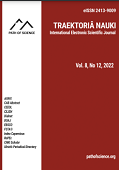Synthetic Subordinate Complex Sentence Structures in the Language of Azerbaijani Folklore Materials
Synthetic Subordinate Complex Sentence Structures in the Language of Azerbaijani Folklore Materials
Author(s): Konul Babash DanziyevaSubject(s): Language studies, Customs / Folklore, Theoretical Linguistics, Syntax
Published by: Altezoro, s. r. o. & Dialog
Keywords: sentence; complex sentence; subordinate complex sentence; synthetic; intonation;
Summary/Abstract: The article deals with the complex sentence structures with a synthetic subordinate in the language of folklore materials. It has been noted that the meaning and content of our folklore is expressed through sentence structures. A sentence is a means of communication and exchanging ideas in oral and written speech. The sentence structures that are indicators of the folklore language have preserved the ancient traces of oral language. One of these sentence structures is subordinate complex sentences. Subordinate complex sentences combine two or more sentences through semantic and grammatical subordination. One of the components of a subordinate complex sentence is grammatically independent, and the other is dependent on it. One of the types of subordinate complex sentences is a synthetic subordinate complex sentence in which the dependent clause is connected to the main clause only by intonation. Since intonation is the oldest means of connecting the components of subordinate complex sentences, it manifests itself more in folklore materials. It also plays an essential role in the expression and pronunciation of sentences. In the synthetic subordinate complex sentences used in the language of folklore materials, intonation determines the boundaries of components, ensures the rhythmic-melodic flow of speech, and expresses the idea clearly. The parts of synthetic subordinate complex sentences are often composed of sentences pronounced with the same intonation and according to the dependent sentence. Studying such corrections will provide rich material for historical syntax and reveal the ancient traces of our oral literary language.
Journal: Traektoriâ Nauki
- Issue Year: 9/2023
- Issue No: 10
- Page Range: 1011-1015
- Page Count: 5
- Language: English

